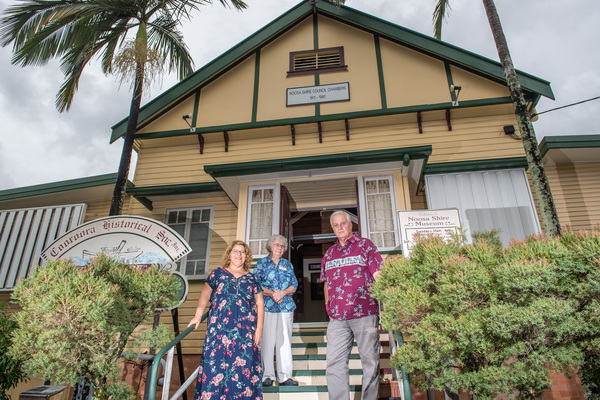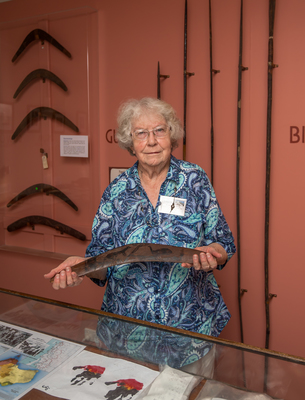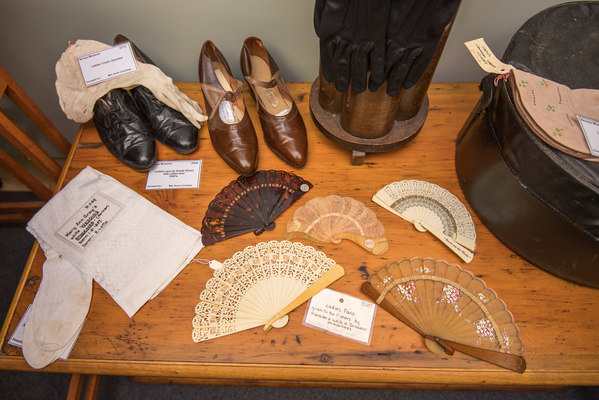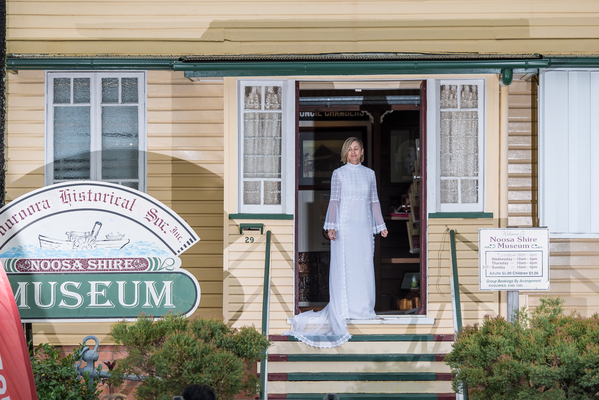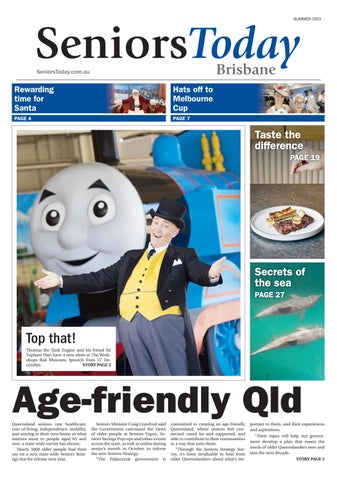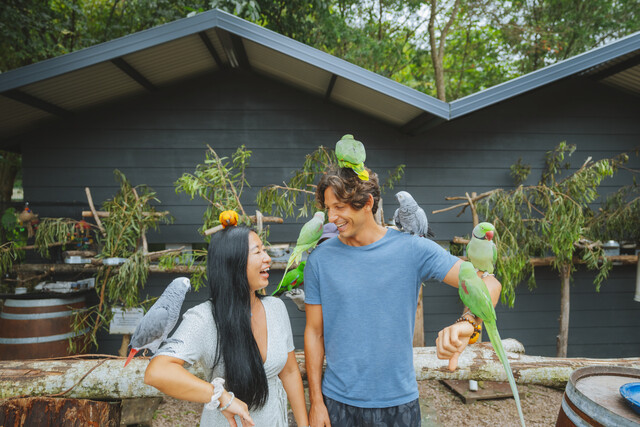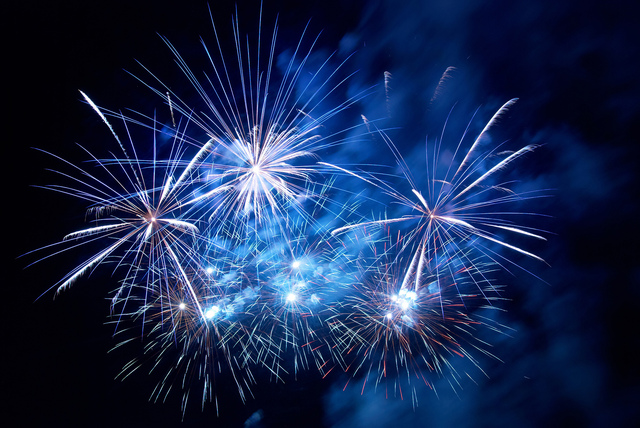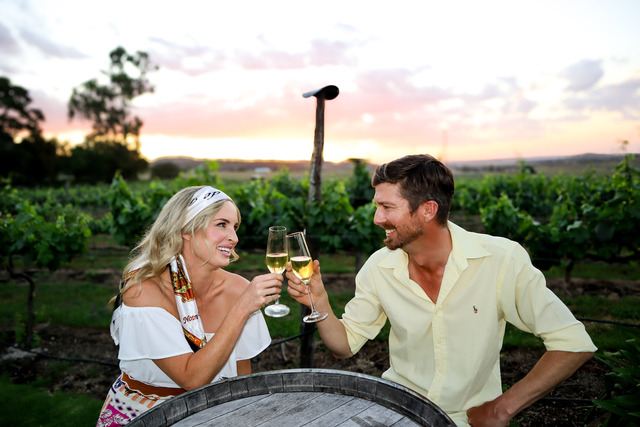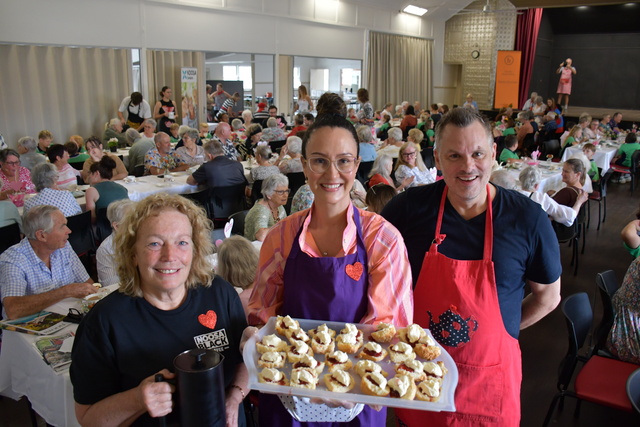Stepping into the Noosa Shire Museum at Pomona is like being transported to a past time. Its rabbit warren-like rooms are laden with treasures, which tell the story of the shire. At each turn there are items of interest from photographs and clothing to documents and displays. Significantly, the museum is also the Keeping Place of objects and memorabilia sacred to the local Kabi Kabi / Gubbi Gubbi people, setting it apart from regional museums that restrict their displays to European history.
The museum is no longer a place where history is stored away in boxes. It has changed its focus to become an information and education centre relevant to present day life, according to Cooroora Historical Society president Jeanette Alfredson.
Noosa Today dropped by the facility recently to speak to the keepers of the regions history.
The Noosa Shire Museum has been based in Pomona since the mid-1980s at the former Shire Council Chambers, which moved to its current facility at Tewantin in 1980.
The museum is operated by a committee and a group of dedicated volunteers and one paid employee, operations and development officer Ann Podobnik. Jeanette was among the museum’s founders, members of the Cooroora Historical Society, who lobbied Noosa Council to establish the Heritage Levy which helps preserve the shire’s significant buildings and culture.
As a descendant of one of the area’s pioneering European families Jeanette has a long-standing interest in the shire’s history. Her family was a timber family whose father operated his business from Pomona’s Alfredson building which now houses a brewery. After WWII housing was in short supply and her father, a cabinetmaker, built pre-cut houses which were sent by rail across the state to be assembled.
The museum’s role has been to preserve and interpret its past. It contains 6000 items of historical significance and 1500 manuscripts and family histories. The museum also houses an extensive and impressive collection of 9000 photographs, capturing many moments of the shire’s pioneering past as well as modern moments that will one day be an important part of local history. Ann said her role has included sorting through collections that had been stored away for 30 years. “About 90 per cent of the collection has come out of storage boxes. It’s a good opportunity to show the community what we’re housing,” she said.
The museum benefits from a small annual grant from the Council. However, this year, Noosa Council set aside an additional $20,000 to help the Cooroora Historical Society prepare a new strategic plan, train volunteers in conservation practices and purchase a computer program, known as Mosaic, which is used to track the collection items and report on each item’s history and condition.
The museum has embarked on its plan to make its collection more relevant to visitors by reorganising exhibits into ‘themes’ of history, innovation, environment, community engagement and education and are beginning a process of refreshing displays.
“We should be relevant to what is happening today,” Jeanette said. “There’s a responsibility to the community to provide information on social issues.”
Committee member Brian O’Connor said two matters which stood out in the review were the need to do more to focus on coastal Noosa history and to showcase local Indigenous culture.
Brian said through its participation in the review those who guide the museum have been challenged to accept change and have become emboldened with the confidence to tackle it head-on.
“We realise that, while our task is to preserve and interpret the past, it is not where our thinking belongs,” he said. The changes wrought by this process have already begun in the areas of governance, removing items for sale and procurement, he said. “And we realise more the importance of our volunteers and the additional training we must give them.”
The museum is also co-operating with Pomona’s other historic sites to enhance the historic experience for visitors. The museum and the Majestic Theatre aim to attract visitors for a ‘blast of the past’, combining a silent movie, lunch in the park and a guided tour of the museum and its memorabilia.
The museum welcomes visitors from far and wide. Jeanette said about 10-15 per cent came from Britain, some from New Zealand and many from Victoria. “A lot of people come here to do their family histories,” she said. In addition a steady stream of students visit as part of their school curriculum and learn about the changes that have happened over time.
Brian said the museum provided people with a sense of place. He sees the museum having a significant role to play in relation to the Noosa Biosphere
“We are a people that, in everything we do, we must consider our impact on the environment … and that goes to the heart of how we live,” he said.
“So interpreting ourselves and who we are … the Noosa Shire Museum sits at the heart of Noosa Shire’s Living Heritage Town at the centre of the Noosa Biosphere. That is a pretty important space to occupy. We should be the Biosphere Museum. That sets us apart from other museums in country towns. Ours is a bigger role, on behalf of the entire shire. Noosa’s story is important and needs to be told well.”

